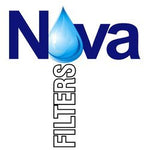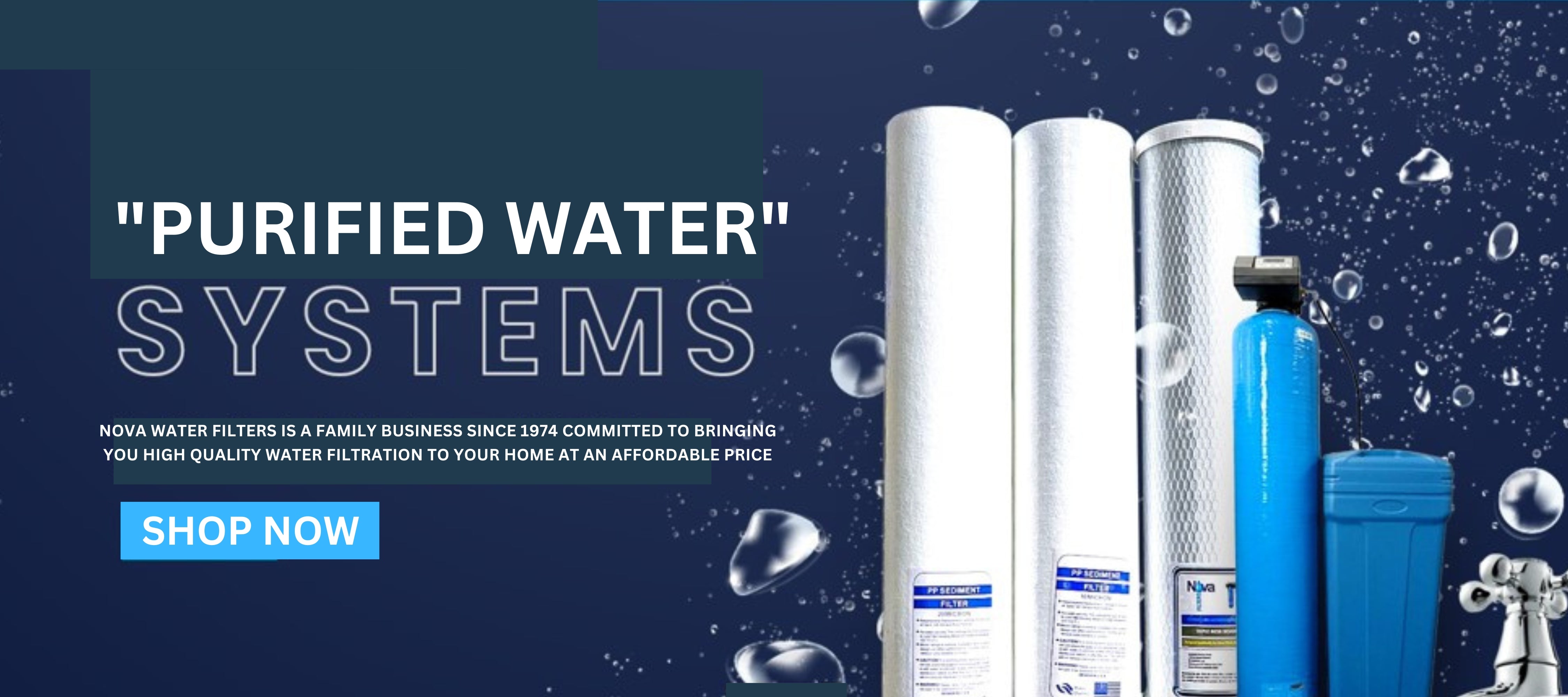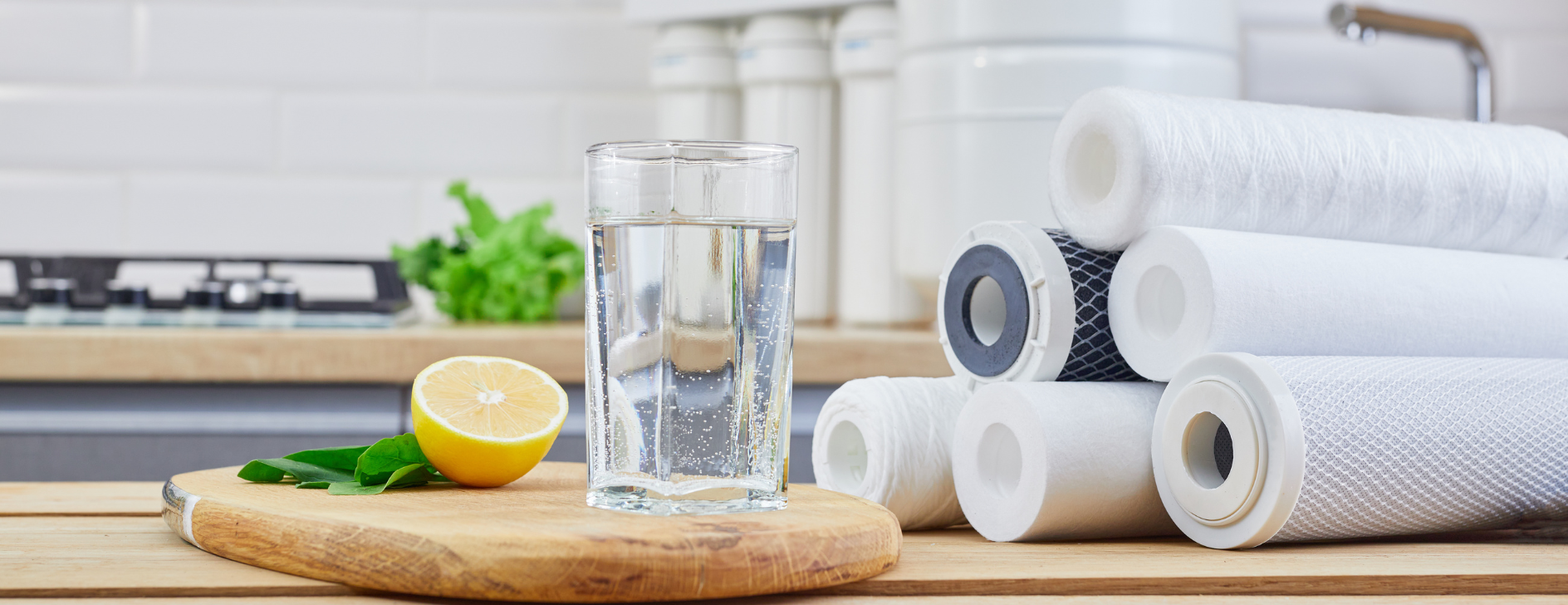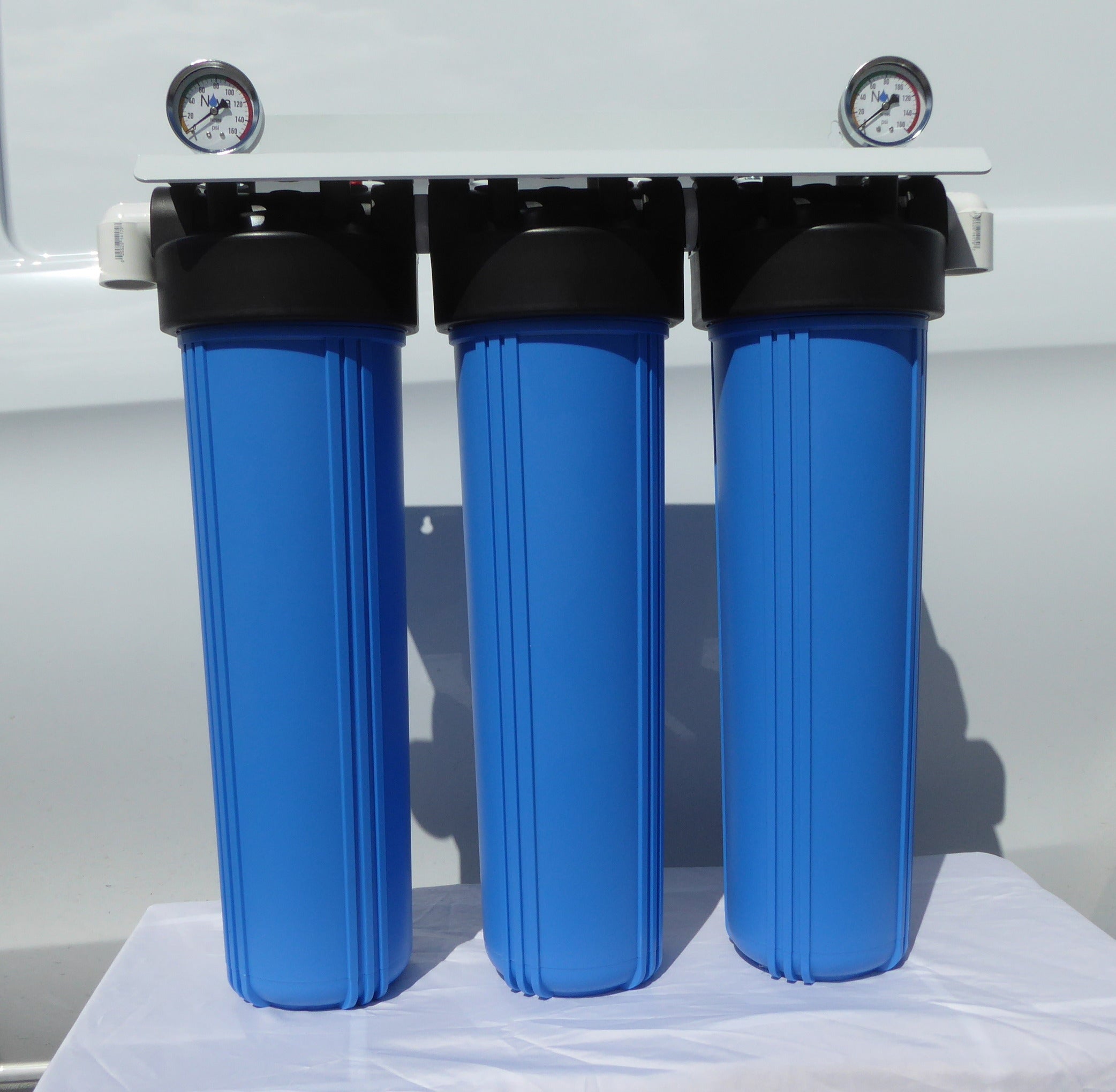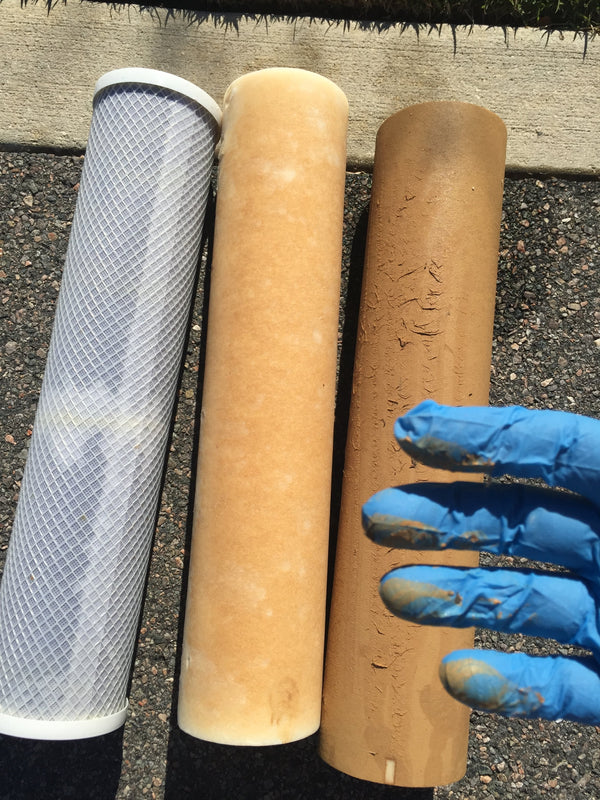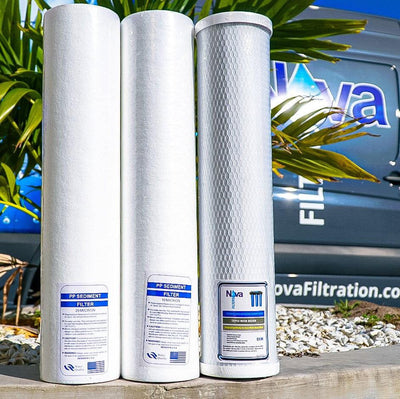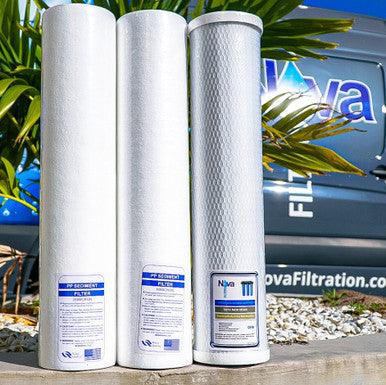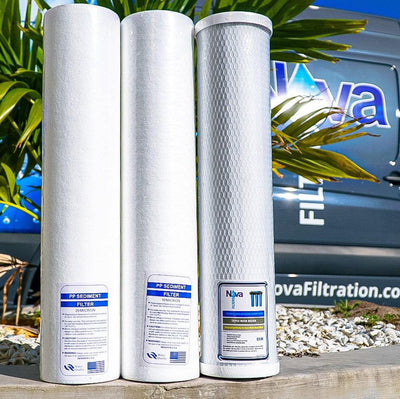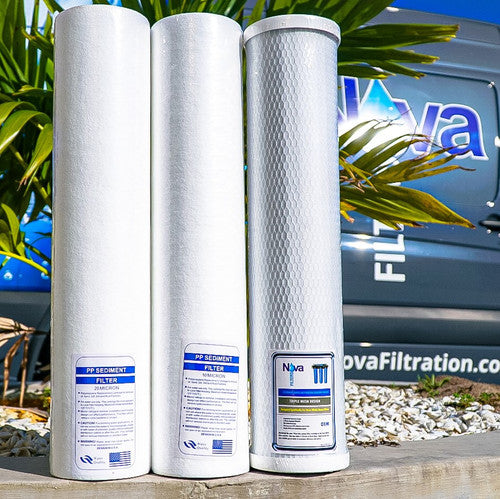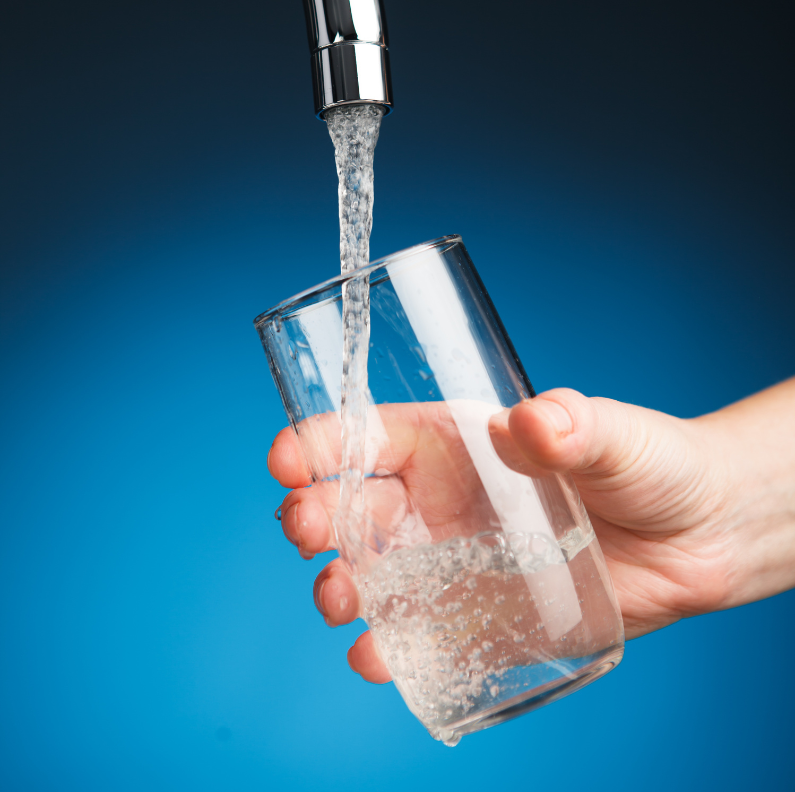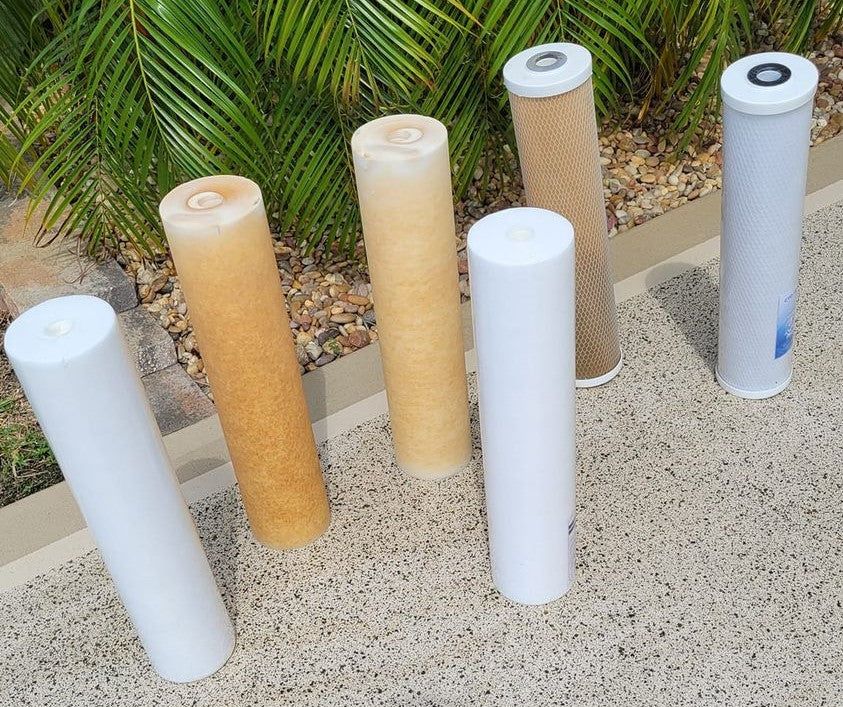Since 1974, we have been providing Whole House Water Filters, water softeners, and reverse osmosis water treatment solutions.
Our services include local installation in The Villages, FL, and the surrounding areas, as well as nationwide shipping for those who prefer DIY installation or professional assistance by a local plumber.
All of our products are meticulously designed and assembled by Nova in the USA, and they come with a comprehensive warranty.
We transform ordinary tap water!
Chlorine Taste Odor
MICRO PLASTICS
Sediment & other harmful contaminants
NOVA FILTERS
NOVA FILTERS
FILTER CARTRIDGE
Set of three cartridges, two different micron size sediments and one proprietary coconut carbon
Nova Brand cartridges
2 Sediment and one Nova Super CocoNut Carbon
Our proprietary carbon has the highest purity rating in the USA
We can service or if you wish DIY Ship or pickup at our warehouse

